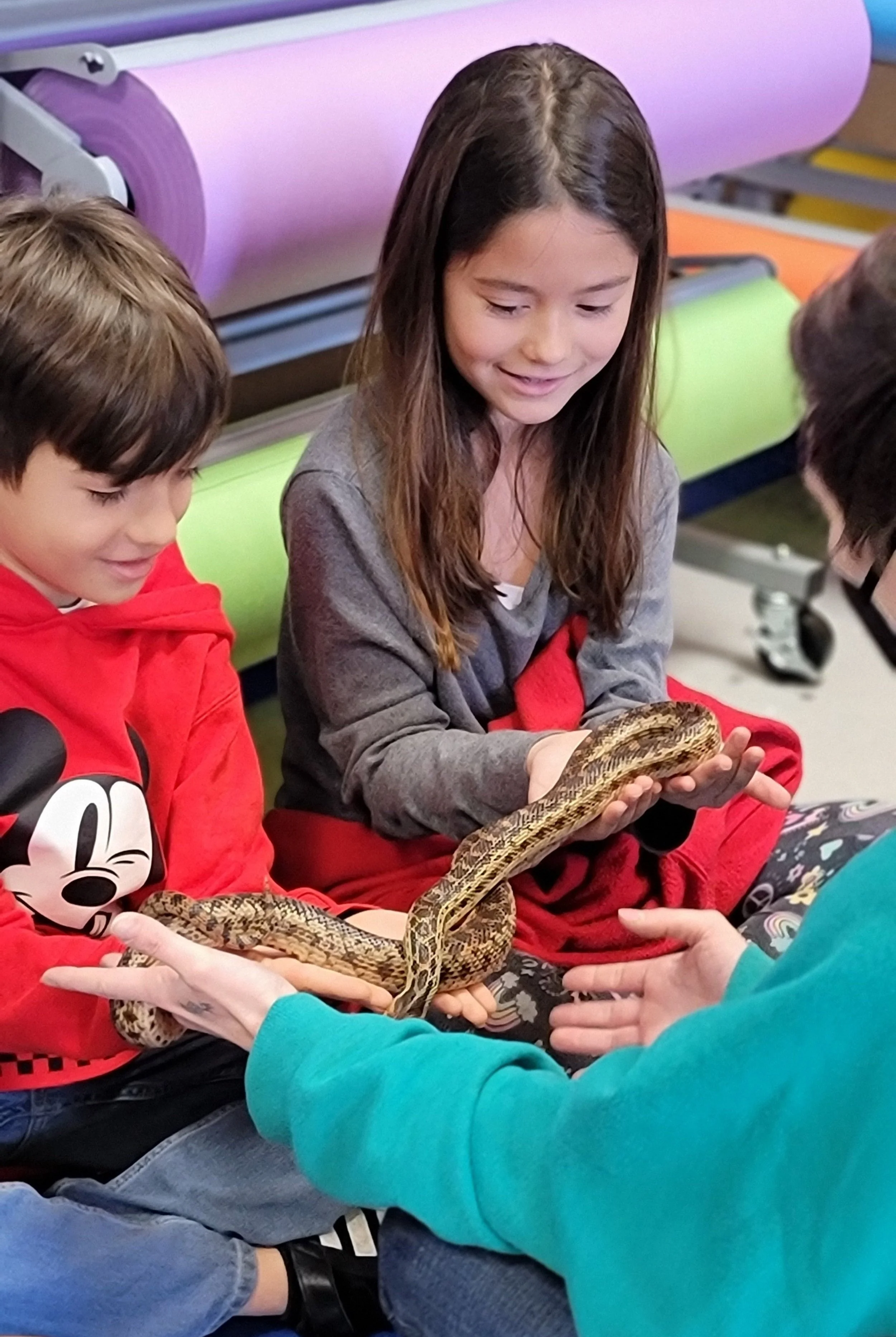Slinky, the Gopher Snake
In many ways, Slinky is your typical gopher snake. But those typical snake instincts got them into a little trouble when they ended up seeking shelter in a train car. After being discovered and mistaken for a rattlesnake (!), Slinky made their way to Things That Creep and has served as a much loved animal ambassador since 2017, helping shift snake perspectives while being held and touched gently by hundreds of students each year. Slinky visited 46 classrooms in 2024.
Like Slinky, many snakes face threats from humans just for acting within their natural instincts. While there are many things we can do to keep gopher snakes safe, one of the most important things we can do for all of our snake neighbors is to slow for snakes when driving in areas and at times when they are most likely to be basking on the road.
FAST FACTS:
Slinky is a gopher snake (Pituophis catenifer). Gopher snakes can be found throughout the Bay Area and are found in almost every California ecosystem.
HARMLESS TO HUMANS, these snakes are often mistaken as rattlesnakes due to their similar coloration. Additionally, when threatened, they shake their tails and flatten their heads, adding to the confusion.
Gopher snakes are constrictors and are known to eat small mammals, birds and their eggs, lizards, and insects. They help keep our neighborhoods and gardens rodent free!
One of the largest snakes in California - these large snakes can grow over 5 feet long!
Students at Murphy Elementary School in Richmond meeting Slinky in spring 2024.
To support Slinky and their important work in the classroom, consider becoming their sponsor!
Can you spot the snake? Gopher snakes get their names from the fact that they often burrow in abandoned rodent nests. This is a wild gopher snake spotted in Contra Costa County, 2024.
Slinky at Washington Elementary School in Richmond, 2025.
Wild gopher snake basking on a trail. Contra Costa County, 2024.
Slow for Snakes!
As they are ectotherms (aka cold-blooded), snakes seek warm spots where they can bring their body temperatures up, especially on warm evenings. Unfortunately, this often means finding themselves exposed on paved roads roads and open trails. Snakes are killed after encounters with humans for going about their natural behavior and these deaths are completely preventable.
Here are a few things you can do to prevent injury and death for snakes like Slinky:
Slow your driving speed on back roads, especially in areas that are known to have lots of snake activity. Snakes are often seeking the last heat of the day on paved roads in the early evening and into the night.
If you see a snake in the road while driving, go around it and do not run over it! If you can identify and safely (for yourself and the snake) move the snake off the road, move it to the side of the road in the direction it was headed. Snakes are not able to recover from vehicle collisions. A gentle touch with a stick is usually sufficient to encourage them to move to safety.
Snakes are also seen on trails, where they can often find good spots to sun themselves. If you see a snake on an isolated trail, leave it alone! If it’s a busy trail, you can encourage the snake to move off the trail gently with a stick so that no one steps on it or runs over it with a bike. Do not touch the snake if it is venomous or you cannot identify the snake. It’s always best to leave a snake alone if possible.
If you encounter a snake (or other animals) that has been killed by a vehicle, report it on https://www.inaturalist.org/projects/california-state-roadkill. Reporting roadkill adds valuable data, so that researchers can understand and try to influence the factors that contribute to these deaths. Gopher snakes are the most commonly reported snake in California to be run over by cars.





